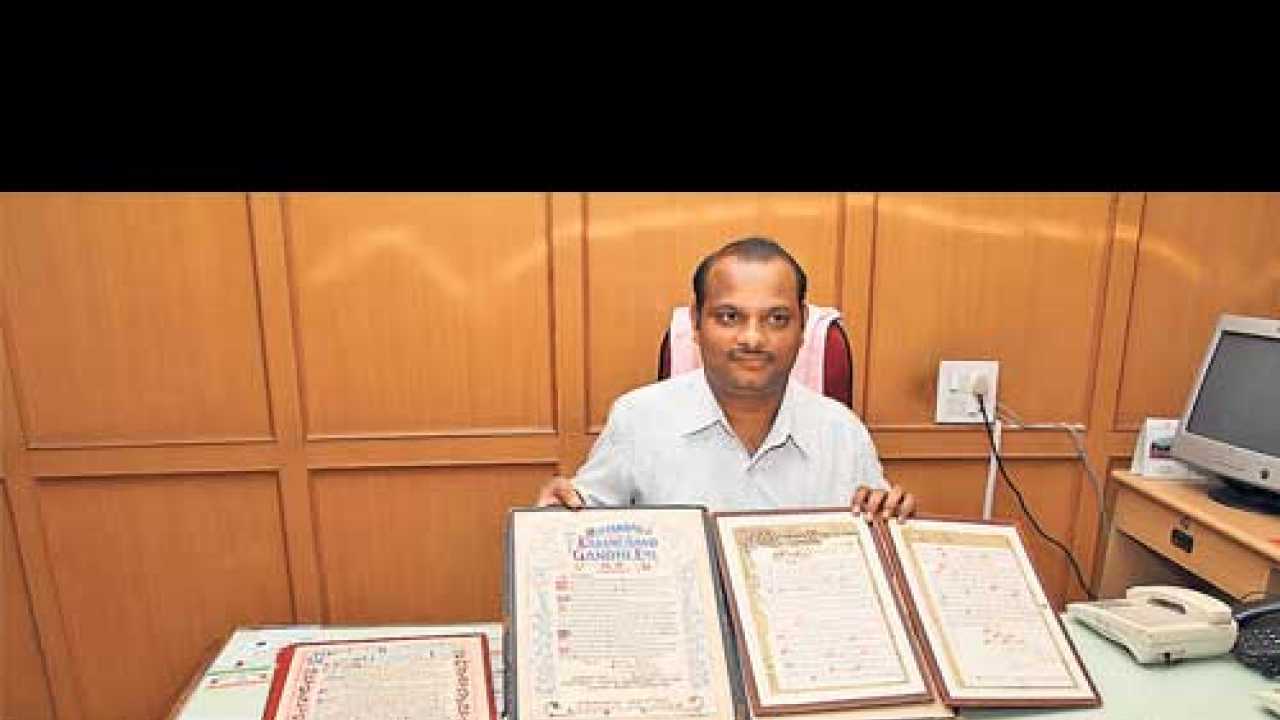
- Select a language for the TTS:
- UK English Female
- UK English Male
- US English Female
- US English Male
- Australian Female
- Australian Male
- Language selected: (auto detect) - EN
Play all audios:
Despite multiple agencies flushed with funds, Gandhi heritage continues to rot from neglect & apathy. When some more of Mahatma Gandhi’s memorabilia was sold at an auction house in
England earlier this week, not much noise emerged from the regular quarters that are prone to making their point in such situations. Moreover, even the auction generated lukewarm response.
And this happened with good reason. In the last five years, especially since a few auction houses have started selling Gandhi’s personal items and letters, scores of people across the world
have suddenly woken up to the fact that these items which they once considered worthless heirlooms are worth a small fortune. In the first couple of auctions, Government of India’s cultural
department intervened and bought the items on sale at an astounding price. Lately, the clamour for bringing back Gandhi’s memorabilia as India’s national treasure is also dying. “There is no
way to say Gandhi (his material belongings now) rightfully belongs only to India; it doesn’t. Gandhi belongs to the world. There is so much memorabilia in various forms spread all over the
world, it is not only impossible to track, but equally difficult to preserve. We have so much material in form of Gandhi heritage by default in India that we would do well to preserve it,”
says managing trustee of Sabarmati Ashram and Preservation Trust, the house that was Gandhi’s residence in Ahmedabad between 1917 and 1930. The missing will, supposed to be in Navajivan
Trust’s custody, is a fine case in point. Sarabhai highlights that the multiple buildings that Gandhi visited / lived / worked in are a living heritage. How we preserve these buildings
speaks volumes of our value for our historical heritage. For instance, the Kochrab Ashram on Ashram Road in Paldi is where he first stayed for two years when he came to India in 1915. Also
known as Satyagraha Ashram, the building though exists lies in a neglected condition. Another such place, a hut in Karadi village, where he stayed for several days during the Dandi March
lies in ruins, along with a Charkha and multiple photo frames, whose antecedents are unclear. The original Dandi Pul (bridge) adjacent to Sabarmati Ashram from where he started the Salt
Satyagraha that changed the whole dynamics of Independence movement, was lying in a pathetic state of neglect for seven decades. The area around the bridge is surrounded by squatters and a
favourite place for open defecation by the surrounding communities, so much so that even the courts had to intervene to stop such abuse of this historical monument. Last year, the wooden
bridge caught fire and was almost destroyed when cleaning staff of the urban local body were burning trash. The bridge is now being rebuilt completely and finally 83 years after the historic
Salt Satyagraha, the Ahmedabad Municipal Corporation announced this month that the place will be turned into a tourist spot which will highlight its historical significance. When Bapu
embarked on the Salt Satyagraha in 1930, he donated / gifted about 11,640 books from his personal collection to AMC’s MJ Library, which were the first books for the city’s public library.
These also included those he brought from South Africa. He also gave original copies of his certificates from SA to the library. In 2011, DNA reported how about half of these books are
missing – whether stolen, inadvertently or purposely destroyed, sold or plain misplaced – no one knows. The incumbent keeper is unaware exactly how many certificates were donated but only
nine are available now. Each of them badly decayed, thrust carelessly in the side-corners of a cupboard. If an international auction house got its hands on these certificates, it would make
enough dough to fund the complete makeover of the library. Sabarmati Ashram has two desks and one charkha that is an original. Even as an auction house earlier sold one pair of Bapu’s
spectacles, the ones available for public viewing in Sabarmati Ashram are replicas. These are only some of the glaring instances in Gujarat, where Bapu spent the first 15 years of his life
after returning to India. Agencies responsible for remedial measures have long realized the value and perhaps the need to preserve this heritage naturally available to us, but work is moving
at snail’s pace. A Gandhi Heritage Committee was formed in 2010 under which a stated Gandhi Heritage Sites Mission was proposed. According to news agency reports, the proposal was finally
cleared by the Union Cabinet earlier this month. The mission will aim at preserving for posterity 39 core sites as well as other 2,000 important sites earlier identified by the panel under
the chairmanship of Gopalkrishna Gandhi, a grandson of the Mahatma. A team is working on an ambitious project of the Gandhi Heritage portal that would be something of an open source archive
online. This project is also running way behind schedule. In 2010, then Union Minister of State for Environment and Forests Jairam Ramesh launched the Green Action for National Dandi
Heritage Initiative (GANDHI) project for development and environmental conservation of villages around coastal village of Dandi in South Gujarat where Bapu has launched his Salt Satyagraha.
Another project is called Dandi Heritage Corridor to develop 21 tourist places along the 372 km Sabarmati-Dandi route where Bapu stayed the night during his 23 days of Dandi Yatra. Though
launched about five years ago, all these projects are still at various stages of planning on the drawing board.






